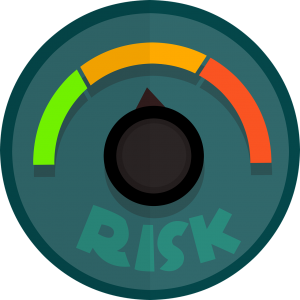Life has its ups and downs. Some of us embrace it, relishing the thrill of the rollercoaster. Others prefer a calmer, more predictable lifestyle.
Which are you? Are you a thrill-seeker who loves the challenge of a sudden curve ball? Or do you prefer things to be on a more even keel?
Perhaps the most important question is: Do you know how your yo-yo impacts you? When the yo-yo dips and things feel wrong, do you tend to panic? Or do you go with the flow and trust that you’ll be back up on a high again soon?
Read on to find out how to recognise those patterns and manage your responses for a better experience and more successful outcome.
Y is for Yo-Yo – Managing the Rollercoaster of Life
The yo-yo of our lives has many aspects to its ups and downs. It’s more than just the highs of our good days where we achieve lots and feel great, or the lows where the yo-yo limply bobs up and down.
During the low times, when it feels like Groundhog Day, we may wake up each morning and think, ‘Here we go again.’ When that happens, consider how you’re feeling and coping. The yo-yo effect is similar to the Kubler-Ross Change Curve. I share a useful exercise here that helps when you hit a hard low.
Recently, one of my clients went a bit quiet on everyone, including me. When we spoke she told me how she had been feeling and said she felt better now. I reminded her that when you’re down, it helps to reach out to an ally, your support network or your coach. That’s when our work together is most valuable because it empowers the bounce back.
We’re often unaware of the impact our yo-yo lives have on our health and productivity. You may feel lethargic or tired without recognising what’s really going on and making the necessary changes to stop you dropping back into the dip again.
Many of us go through life taking one day as it comes and dealing with whatever is thrown at us. Unless we’re thrown a huge curve ball, we tend not to notice the peaks and troughs until we pause and take stock, perhaps when we’re on holiday. During those breaks, are you excited about coming back or do you dread the return? On noticing the ups and downs of normal life, are they little irritations or huge peaks and troughs? It’s different for everyone. We all yo-yo at different rates and amounts and we’re rarely in sync with each other.

The Many Aspects of the Yo-Yo
Dealing with life’s yo-yo is important because life isn’t linear. Life is more like a rollercoaster – very uncomfortable for some; thrilling for those who love the unpredictability of what could happen next.
To remain on a steady course:
- Recognise when you’re stuck in an unhelpful pattern to break the habit
- Consider how comfortable you are with risk – I explore this aspect more below
- Manage your energy resources – I wrote about not burning yourself out here
- Manage the yo-yo’s swing by setting your intentions to achieve your objectives

Stuck in a Negative Pattern
When you get stuck in the same old pattern and realise you’re back in a similar unhealthy or negative situation again, take a moment to consider what happened. There’s a lesson to learn within the circumstances of how you arrived there. You’re stuck in a behavioural pattern that reacts in a certain way to certain situations. It’s a habit that needs interrupting.
Perhaps you always imagine the worst when seeing the first line of an email before reading the entire message, putting you in a negative mood even though the main message is positive. Or maybe you’re sluggish and tired because you thought you should catch up with personal messages instead of having a lunchtime walk. Those patterns have become habits.

What’s Your Risk Profile?
How comfortable are you with risk? If you enjoy the thrill of the gamble, you will be comfortable with volatility as long as you end up where you want to be. Even when their plans are deviating, risk seekers are usually confident all will end well.
Whereas if you’re risk averse, like me, you’re uncomfortable with volatility and need to remain on track to minimise risk with only little deviations. That provides the reassurance that we’ll achieve what we want.
Whatever risk profile you have is fine. The important thing is to understand your approach and risk comfort level, because you make decisions based on your profile. Sometimes, that profile serves you well, other times, it can get in the way of success.
For example, if you’re very risk averse, you may not take an opportunity because you’re avoiding the yo-yo. Conversely, if you’re too comfortable, you may not put enough safety nets in place to mitigate any risks.
Doing your due diligence can make all the difference to managing the yo-yo and help you achieve that reward. So, it’s useful to know your profile.
Reactive or Responsible Responses
Do you tend to react too quickly? Ideally, we should respond to situations responsibly. Especially if something has happened that presses your fear button and puts you into panic mode.
When we feel under threat, that sense of danger puts us into fight or flight reactive mode and our self-defence kicks in. We’re not thinking clearly and we react emotionally, which may not be appropriate. To interrupt that response, remind yourself to take a moment, breathe, re-calculate your figures, read the email again or politely ask the person to repeat what they just said. That moment helps our brains to work on all cylinders, so that we can give a calm, considered response.
When you understand how you approach and respond to the ups and downs in life and what your risk profile is, that knowledge will help you move more positively and intently through life.

Breaking the Cycle
On first waking when we’re still half asleep, we’re in ‘morning amnesia’. Our brain is in a meditative state. That’s an ideal time to say some positive affirmations to yourself to set you up well for the day and get your yo-yo on an upward swing.
Instead of going straight to your action list, focus on something positive. Put a message on your phone, so that when you switch off your alarm it’s the first thing you see. Or put a brightly coloured inspirational note by your bed to remind you of what your purpose is. If you don’t know what that is, you’d better give me a shout!
Once you’ve recognised your unhelpful patterns and triggers, put some deliberate interruptions in place. Set regular phone alarms throughout the day to check in on how you’re feeling. Do you need a break? A walk? Lunch or a cuppa? Or to talk to someone?
Deliberate reminders can interrupt our patterns, break old habits and put new ones in place that serve us better. It’s like someone grabbing the string of your yo-yo to give you a break.
Meeting your coach regularly will do that and help you put new habits in place to break the unhelpful cycles.

The String Catcher
When things go off track, having someone to help you regain your momentum, motivation and focus really helps. You need someone to grab that string! As your coach, I am your string catcher.
This is particularly helpful if you keep repeating old patterns and find yourself stuck in those same difficult circumstances, as mentioned above. Coaching helps you to break habits by interrupting the routine and giving space to learn from what you’ve done before. That learning helps you to enjoy a different, better, more successful experience next time. I spoke about how we learn from our mistakes here.
So, whether your yo-yo tends to have a higher trajectory and you need someone to help you maintain that – or even widen the arc – or it’s swinging low and lost its bounce, I can help. To find out more or to book an exploratory chat, call me on 07766 004964, click here to email me or visit my online diary here to book an exploratory chat.






